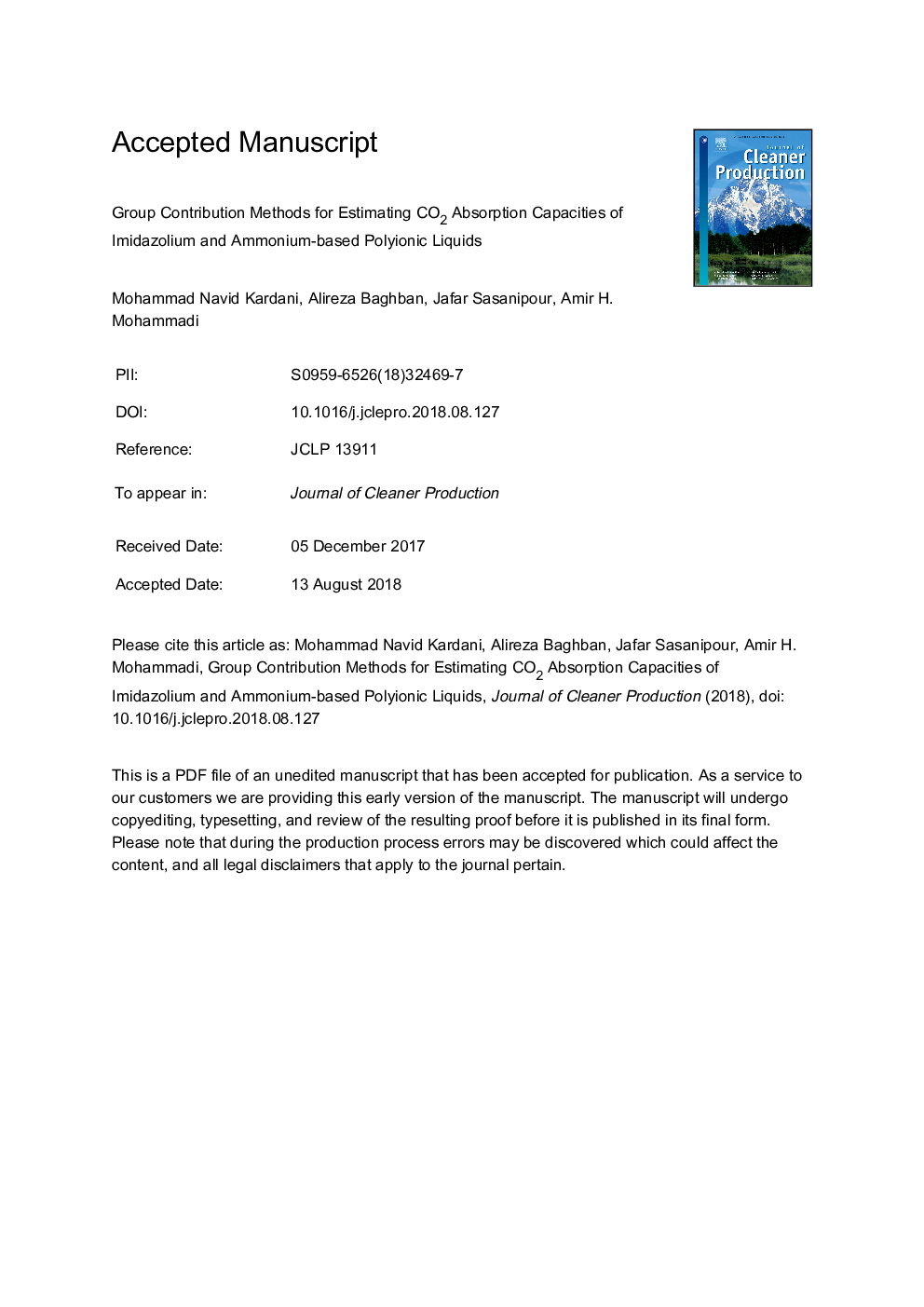| Article ID | Journal | Published Year | Pages | File Type |
|---|---|---|---|---|
| 10142577 | Journal of Cleaner Production | 2018 | 49 Pages |
Abstract
In this work, modeling of CO2 absorption in polyionic liquids has been studied utilizing radial basis function artificial neural network (RBFANN) and least square support vector machine (LSSVM) combined with group contribution (GC) method, RBFANN-GC and LSSVM-GC, respectively. A database comprised of 350 data points containing information for about 35 different polyionic liquids was employed to develop the proposed models. Temperature, pressure, and a number of chemical structures (from group contribution method) are the input parameters of the proposed models. Absorption of carbon dioxide in polyionic liquids is the models' output parameter reported in term of concentration. Outlier detection analysis was performed for both models to enhance the models' validity through the elimination of data points with considerable deviation from the majority of data points in the data base. Results are then compared to results of the previously reported methods, i.e. multi-layer perceptron artificial neural network (MLPANN) and adaptive neuro-fuzzy inference system (ANFIS). Error analyses indicate the great performance of both RBFANN-GC and LSSVM-GC in the estimation of CO2 absorption in polyionic liquids. Average absolute relative average deviation percentage (AARD%) and coefficient of determination are 2.68 and 0.996 for RBFANN-GC, while these values for LSSVM-GC model are 0.271 and approximately 1.00, respectively.
Related Topics
Physical Sciences and Engineering
Energy
Renewable Energy, Sustainability and the Environment
Authors
Mohammad Navid Kardani, Alireza Baghban, Jafar Sasanipour, Amir H. Mohammadi, Sajjad Habibzadeh,
